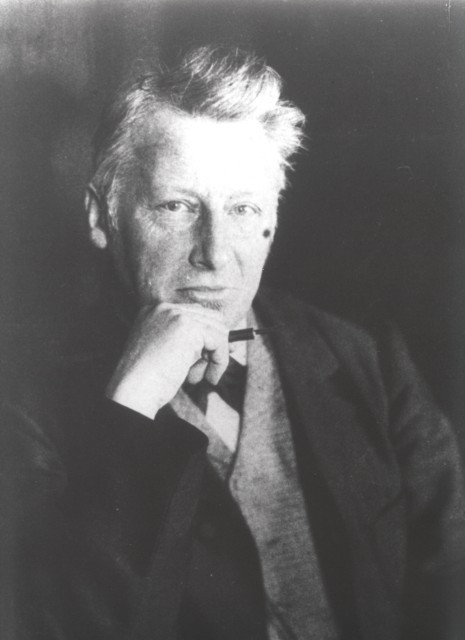Jacobus Hendricus van't Hoff
1852-1911

van't Hoff was the first Nobel laureate in chemistry. He received the prize in 1901
to recognize his discovery of the laws of chemical kinetics, chemical equilibrium
and osmotic pressure. He recognized the importance of concentration in determining
reaction rates, emphasized the reversibility of reactions and treated equilibrium
as a dynamic balance of opposing reactions. He invented the symbol  still used to signify equilibria. van't Hoff showed the analogy between ideal gases
and dilute solutions, and that osmotic pressure can be used to measure molecular weights
in solution. Together with Wilhelm Ostwald, van't Hoff founded in 1887 the first journal
devoted to physical chemistry, the Zeitschrift für Physikalische Chemie.
still used to signify equilibria. van't Hoff showed the analogy between ideal gases
and dilute solutions, and that osmotic pressure can be used to measure molecular weights
in solution. Together with Wilhelm Ostwald, van't Hoff founded in 1887 the first journal
devoted to physical chemistry, the Zeitschrift für Physikalische Chemie.
It is curious that the Nobel Prize was not given to him for his cornerstone proposal (independently reached by Jules Achille Le Bel) that the four bonds of carbon are directed to the corners of a regular tetrahedron, which explained optical isomerism. It was van't Hoff who, at age 22, published his revolutionary ideas that led chemists to think of molecules as objects with structures and 3-dimensional shapes. He constructed the first molecular models, of cardboard, to illustrate the principles of stereochemistry.
van't Hoff was born in Rotterdam, The Netherlands. Although he had strong interests in philosophy, poetry, mathematics and physics he studied organic chemistry with Kekulé; and Wurtz, then returned to the University of Utrecht for his Ph.D. (1874). In 1876 he became lecturer in physics at the Veterinary School in Utrecht and eventually (1878-96) Professor of chemistry, mineralogy, and geology at the University of Amsterdam. He disliked administrative work and teaching, and in 1896 accepted a professorship at the University of Berlin, with responsibility for just one lecture per week. His last publications applied mass-action principles to physiology and the investigation of enzyme reactions.
Location in chemistry building: First Floor; West Wing North Wall; Sequence 6
Source: Prof. P. E. Fanta and the Wilkens-Anderson Company